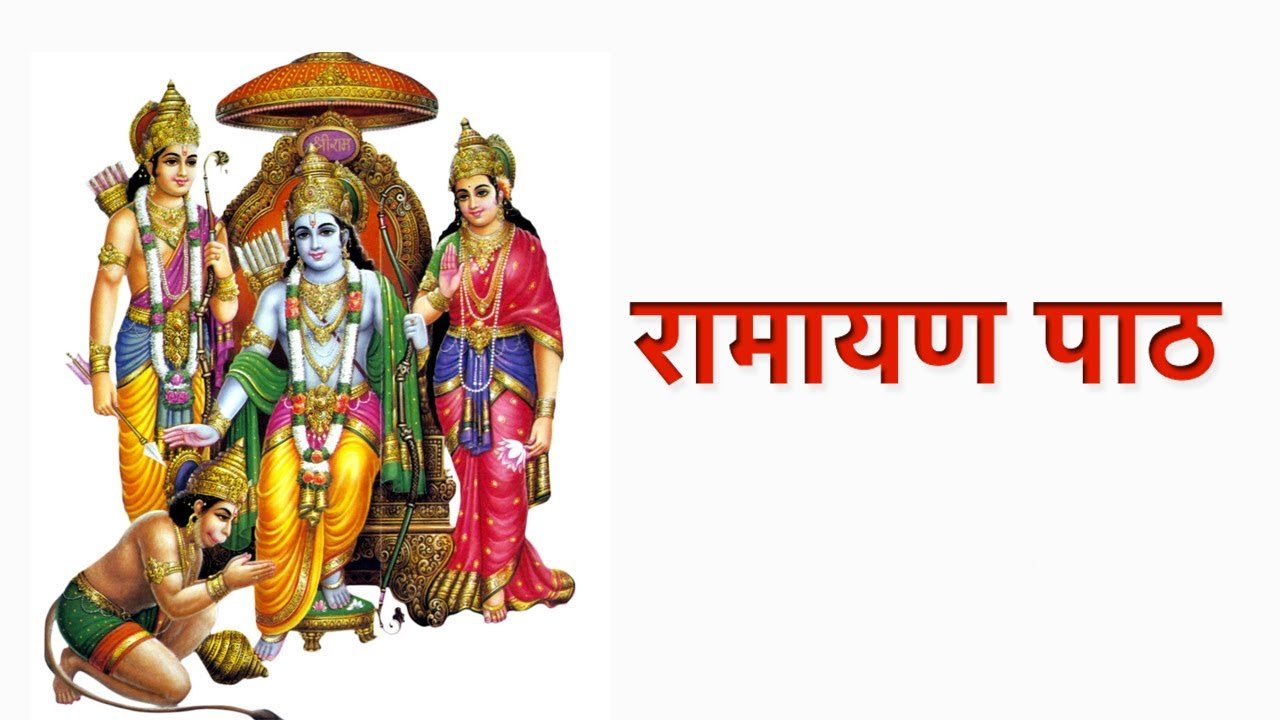Akhand Ramayan Katha or Paath is that the method of reciting the complete of the epic Ramayan, nonstop, that about takes twenty-four hours.
Shri Ramcharitmanas, otherwise referred to as Shri Tulsikrit Ramayana, is an epic composed by Tulsidas (also referred to as Goswami Tulsidas). He was an Indian devotion author, a saint, reformer, and scholar of the sixteenth century, celebrated for his commitment to Lord avatar. Tulsidas was acclaimed in his time period to be a reincarnation of Valmiki, the first author, and musician of the poem Ramayana in Sanskrit.
The expression “Akhand” implies ‘with no break’ or ‘unbroken’. Thus, Akhand Ramayan Paath is a recitation of the epic Shri Ramcharitmanas with none interruptions, through the method of reciting all of the seven Kaands or sections of the verse form.
The advantages of Akhand Ramayana Katha are several to call a few:
– It brings regarding peace, prosperity, and happiness to the family.
– it’s viewed propitious to perform the Paath before the commencement of replacement business, before getting into a replacement house (Griha Pravesh), the birth of a baby, bridal ceremony, then forth.
– It keeps away unknown threats, significantly within the realm of health.
– It brings a couple of divine aura to the place wherever it’s performed, thereby cleansing it and energizing it.
The most ideal time to try and do this puja is on Ram Navami day, that is widely known because of the birthday of Sri Ram. This falls within the Shukla Paksha on the Navami, ninth day of Chaitra month. Some folks organize continuous recitals through the nine days, culminating on the Ram Navami day. The Path begins with an invocation of the Gods and Navagraha mantra Japam followed by an Aarthi. The recitation of the Ramayan then commences over following twenty-four continuous hours.
History of Ramayan Katha:
Tulsidas began writing the Ramcharitmanas in Ayodhya in Vikram Samvat 1631 (1574 CE). the precise date is declared inside the verse form as being the ninth day of the month of Chaitra, that is that the birthday of avatar, avatar Navami. Ramcharitmanas was composed at Ayodhya, Varanasi & Chitrakoot. India was beneath the reign of Mughal emperor Akbar (1556-1605 CE) throughout this era. This additionally makes Tulsidas an up to date of William Shakespeare.
The Ramcharitmanas is written in vernacular Awadhi language, The core of the work is taken into account by some to be a poetic retelling of the events of the Sanskrit epic Ramayana by Valmiki. The Valmiki Ramayana is targeted on the narrative of Rama, the descendant of the genealogy of king Raghu of the Sun family. avatar was the prince of Ayodhya and is taken into account in Hindu tradition because of the seventh Avatar of Vishnu. However, the Ramacharitmanas is by no means that a word-to-word copy of the Valmiki Ramayana nor associate degree short re-telling of the latter. Ramcaritmanas has components from several different Ramayanas written earlier in Sanskrit and different Indian dialects further as stories from Puranas. Tulsidas himself ne’er writes Ramcharitmanas as being a retelling of Valmiki Ramayana. He calls the epic Ramcharitmanas because the story of avatar, that was kept within the mind (Mānasa) of Shiva before he narrated a similar to His married person Parvati. Tulsidas claims to own received the story through his guru, Narharidas. Tulsidas was a naive (Acheta) kid and also the story was kept in his mind (Mānasa) for long before he wrote it down as Ramcharitmanas. Some perceive this passage of the Ramcharitmanas to mean that Tulsidas initially couldn’t grasp the story absolutely as he was a naïve young boy. His guru gracefully repeated it once more and once more in order that he may perceive and recall it. Then he narrated the story and named it Ramcharitmanas as Shiva himself referred to as it. The poem is, therefore, additionally mentioned as Tulsikrit Ramayana (literally, The Ramayana composed by Tulsidas).
The Ramcharitmanas could be a masterpiece of vernacular literature. Some belief it to represent a challenge to the dominance of elegant Brahmanical Sanskrit, reverberant the revolt of Buddha against Brahmanical political theory. However, this interpretation seems faulty as Tulsidas himself was a brahmin and infrequently talks terribly extremely of the Brahmins in Ramcharitmanas and different books written by him. it absolutely was the try of Tulsidas to reconcile the various stories of avatar and to bring the story inside the reach of the common man.

